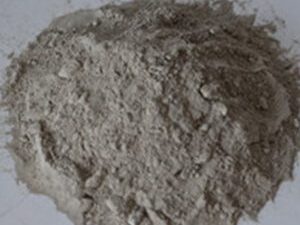Description
Alumina Bricks: The Unsung Heroes of High-Temperature Industries
Alumina bricks, also known as high-alumina bricks, are a cornerstone material in a wide range of industries requiring exceptional heat resistance, strength, and chemical inertness. Often overlooked, these unassuming blocks play a crucial role in processes ranging from steelmaking to cement production, quietly enduring extreme conditions that would decimate lesser materials.
What are Alumina Bricks?
Alumina bricks are refractory materials primarily composed of aluminum oxide (Al2O3), commonly referred to as alumina. The alumina content can vary significantly, ranging from around 45% to over 90%, with higher alumina content generally indicating superior performance. The remaining composition typically includes silica, iron oxide, titanium oxide, and other minor oxides that influence specific properties like thermal shock resistance and refractoriness under load.
Key Characteristics and Properties:
The inherent properties of alumina give these bricks their exceptional performance capabilities:
- High Refractoriness: They can withstand extremely high temperatures, remaining structurally sound even in environments exceeding 1700°C (3092°F).
- Excellent Thermal Shock Resistance: They resist cracking or spalling due to rapid temperature fluctuations, crucial for applications involving intermittent heating and cooling cycles.
- High Strength: Alumina bricks possess significant compressive strength, allowing them to support heavy loads at high temperatures.
- Chemical Inertness: They are resistant to corrosion and erosion from acidic and alkaline slags, gases, and other harsh chemicals commonly encountered in industrial processes.
- Low Thermal Conductivity: They provide excellent insulation, minimizing heat loss and improving energy efficiency.
- Abrasion Resistance: While perhaps not their primary strength, some alumina bricks offer decent abrasion resistance, extending their lifespan in demanding environments.
Applications Across Industries:
The unique combination of properties allows alumina bricks to excel in diverse applications, including:
- Iron and Steel Industry: Lining blast furnaces, electric arc furnaces, ladles, and other crucial equipment for melting and refining iron and steel.
- Cement Industry: Lining rotary kilns, preheaters, and coolers in cement production.
- Glass Industry: Forming the lining of glass melting furnaces where resistance to molten glass attack is paramount.
- Ceramic Industry: Supporting and insulating kilns for firing ceramics and porcelain.
- Petrochemical Industry: Lining reactors and furnaces in various petrochemical processes.
- Incineration Plants: Providing a durable lining for waste incinerators that can withstand high temperatures and corrosive gases.
- Power Generation: Lining boilers and furnaces in power plants.
Manufacturing and Considerations:
Alumina bricks are manufactured through a carefully controlled process involving:
- Raw Material Selection: High-quality alumina raw materials, such as bauxite and synthetic alumina, are chosen based on the desired properties of the final product.
- Mixing and Grinding: The raw materials are meticulously mixed and ground to achieve a consistent particle size distribution.
- Shaping: The mixture is then shaped into bricks using various methods, including pressing, casting, and extrusion.
- Firing: The shaped bricks are fired at high temperatures (typically above 1400°C) in specialized kilns to sinter the alumina particles and develop their characteristic strength and refractoriness.
When selecting alumina bricks, factors to consider include:
- Alumina Content: Choose the appropriate alumina content based on the operating temperature and chemical environment.
- Brick Size and Shape: Select the optimal size and shape to fit the specific application and ensure proper installation.
- Porosity: Lower porosity generally translates to higher strength and resistance to chemical attack.
- Refractoriness Under Load (RUL): This measures the brick’s ability to withstand load at high temperatures and is a critical parameter for structural applications.
The Future of Alumina Bricks:
Ongoing research and development efforts are focused on enhancing the performance of alumina bricks through:
- Improved Raw Materials: Exploring new and more sustainable sources of alumina.
- Advanced Manufacturing Techniques: Implementing innovative processes to improve brick density and reduce manufacturing costs.
- Composite Materials: Incorporating other materials, such as zirconia and silicon carbide, to further enhance specific properties.
Conclusion:
Alumina bricks are essential components in numerous high-temperature industrial processes. Their exceptional properties, combined with ongoing advancements in manufacturing and materials science, ensure their continued importance for years to come. While often hidden from view, these unsung heroes quietly contribute to the production of essential materials that underpin modern society. They represent a testament to the power of engineered materials to withstand extreme conditions and enable critical industrial operations.

















Reviews
There are no reviews yet.